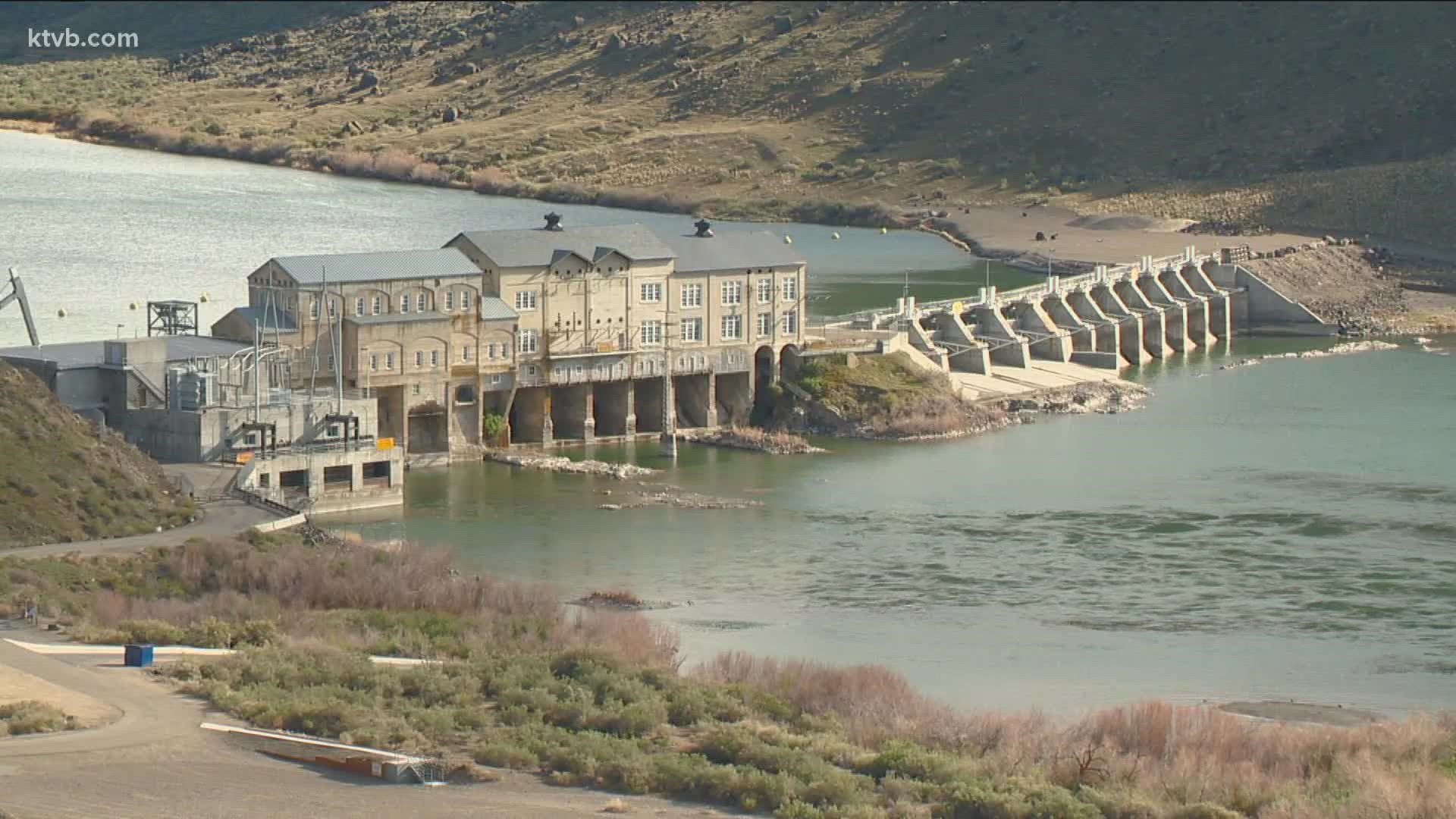BOISE, Idaho — Idaho environmental officials are proposing a $1 million fine as part of a settlement agreement with Idaho Power involving pollution permits at 15 of the public utility’s hydroelectric facilities in southern Idaho.
The Idaho Department of Environmental Quality announced the proposed agreement with the public utility on Thursday and is seeking public comments for 30 days.
Idaho Power had permits from the U.S. Environmental Protection Agency for the facilities for decades until the federal agency determined they weren’t needed in the 1990s.
"These facilities were actually covered by permits starting in the early '70s and had coverage up until EPA and the company had conversations and determined that according to the federal law at the time, the facilities did not need permit coverage, so they terminated the coverage," said Mary Anne Nelson, Surface and Waste Water Division Administrator with Idaho DEQ.
Idaho Power in January contacted Idaho officials after determining policy changes might again require the facilities have permits. Idaho Power said it self-reported because it wanted to be proactive in protecting the environment.
“We're certainly disappointed that there's a fine associated with this,” said Ryan Adelman, Idaho Power's vice president of Power Supply. “But we're also encouraged that there's a process to get into compliance.”
Mary Anne Nelson, the administrator for the Environmental Department’s Surface and Wastewater Division, said the two entities started negotiating after Idaho Power reported the potential violations and mutually agreed on a path that used the courts to reach a settlement agreement.
“I would say they are good actors in this," Nelson said. "This is an action we took together.”
As part of that plan, the agency on Thursday filed lawsuits in seven counties against the utility for what it said are violations of the federal Clean Water Act and the Idaho Environmental Protection and Health Act. The proposed settlement agreement was announced the same day, indicating negotiations had been going on well before the lawsuits were filed.
One possible advantage of involving the courts is that a settlement agreement has to be approved by the court and gives both sides a definitive legal document going forward.
Each of the 15 hydroelectric facilities received a fine of $72,870 that Nelson said was based on criteria the agency has developed.
"There's just been a switch or a change in the federal interpretation of what we are considering a discharge of pollutants to the waters of the U.S." Nelson said.
Most of the facilities had been without permits since the 1990s, but Nelson said the statute of limitations for such violations is two years.
Idaho in recent years has been taking over issuing pollution permits from the U.S. Environmental Protection Agency. Idaho only started issuing pollution permits for hydroelectric facilities in 2019.
The proposed agreement requires Idaho Power to submit applications to Idaho for pollution discharge permits for the facilities. It also requires the company to comply with water quality standards as well as oil and grease effluent limits.
Adelman said there might be some technology updates needed, but “we had permits in the past, so I don't think there's a significant lift.”
"We have been very proactive with eliminating sources of discharge as a result of just ongoing upgraded projects," Adelman said. "Whether it's the security or environmental, everything is becoming more restrictive and while we don't anticipate operations to change, we certainly want to make sure we are in compliance with what's required."
The Environmental Department filed the complaints in Ada, Gooding, Jerome, Owyhee, Power, Twin Falls and Valley counties, where the 15 hydroelectric facilities are located.
The hydroelectric dams named in court documents are American Falls, Bliss, Cascade, C.J. Strike, Swan Falls, Lower Salmon Falls, Upper Salmon Falls A, Upper Salmon Falls B, Upper Malad, Lower Malad, Milner, Twin Falls, Shoshone Falls, Thousand Springs and Clear Lake.
Comments on the settlement agreement are being accepted through May 9.
Idaho Power has more than 600,000 customers in southern Idaho and eastern Oregon. The company has 17 hydroelectric facilities on the Snake River and its tributaries, with the Hells Canyon Complex on the Snake River providing about 70% of the company’s hydroelectric generating capacity and 30% of the company’s total generating capacity.
The Hells Canyon Complex is not involved in the settlement agreement.
To view and give public comment on the settlement click here.
Watch more Local News:
See the latest news from around the Treasure Valley and the Gem State in our YouTube playlist:

